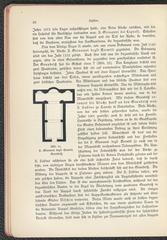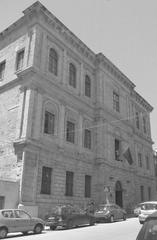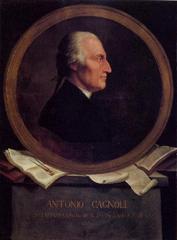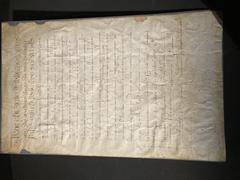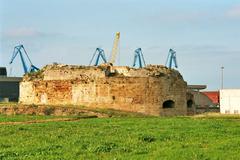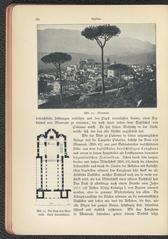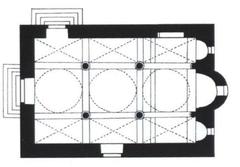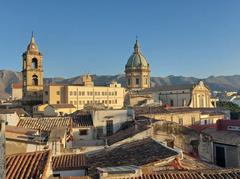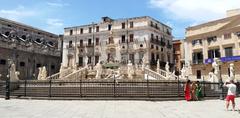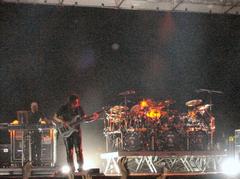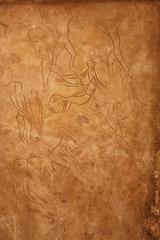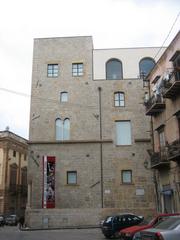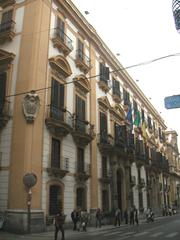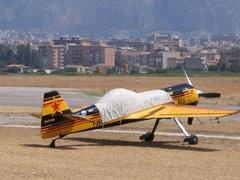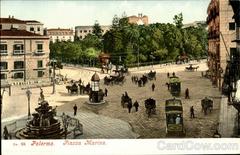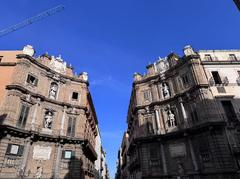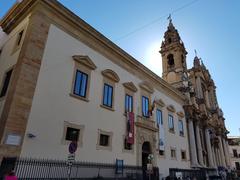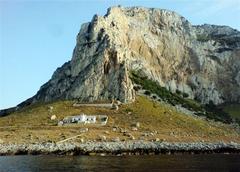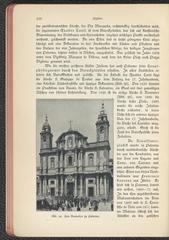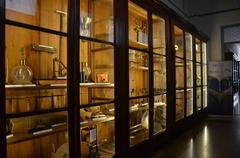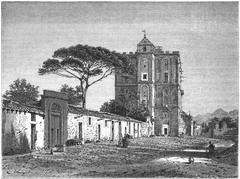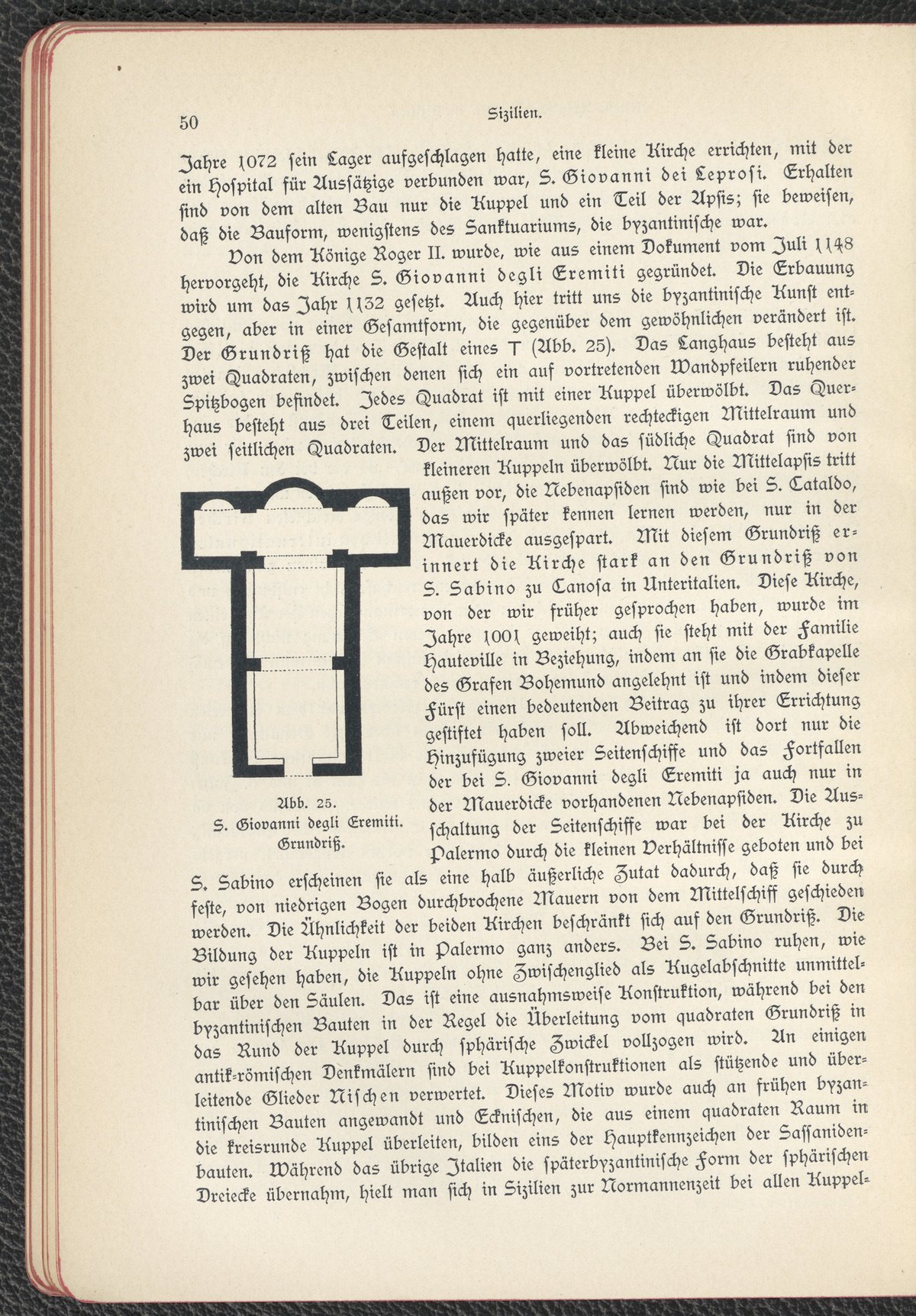
Visiting Hours, Tickets, and History of San Giovanni Degli Eremiti in Palermo
Date: 16/08/2024
Introduction
San Giovanni Degli Eremiti, nestled in the vibrant city of Palermo, Sicily, is a historical gem that captivates both history buffs and curious travelers. This monument, with its iconic red domes and rich cultural history, stands as a testament to the diverse influences that have shaped Sicily over the centuries. Originally established as a place of worship in the Byzantine era, the site has undergone multiple transformations, reflecting periods of Christian, Islamic, and Norman dominion. Each era left an indelible mark on the architectural and cultural fabric of San Giovanni Degli Eremiti, making it a unique symbol of Palermo’s layered past. Today, it is part of the UNESCO World Heritage site ‘Arab-Norman Palermo and the Cathedrals of Cefalù and Monreale,’ underscoring its significance as a historical and architectural landmark. As you plan your visit, this guide will provide comprehensive insights into its history, visitor information, travel tips, and nearby attractions, ensuring an enriching experience at this remarkable site (Sacred Destinations, The World of Sicily, Lonely Planet).
Table of Contents
- Introduction
- History of San Giovanni Degli Eremiti
- Visitor Information
- Travel Tips
- Nearby Attractions
- Accessibility
- Special Events and Guided Tours
- FAQ
- Conclusion
Explore San Giovanni Degli Eremiti: History, Visiting Hours, Tickets, and Travel Tips
History of San Giovanni Degli Eremiti
Early Foundations and Byzantine Influence
San Giovanni degli Eremiti dates back to the early centuries of the Common Era. The site originally hosted a place of worship, possibly Byzantine, as early as the 6th century. This early structure was likely a Benedictine chapel, reflecting the religious and cultural influences of the Byzantine Empire in the region (Sacred Destinations).
Gregorian Monastery and Early Christian Era
By 581 AD, the site had evolved into a Gregorian monastery dedicated to Sant’Ermete (St. Hermes). This period marked the establishment of a significant Christian presence in the area, supported by figures such as Pope Gregory the Great. The monastery gained prominence, with the seventh-century Pope Agatho taking orders there (The World of Sicily).
Saracen Conquest and Islamic Influence
The 9th century brought significant changes as the Saracens, or Arab conquerors, took control of Sicily. During this period, the monastery was either closed or converted into a mosque, reflecting the Islamic architectural and cultural influences that began to permeate the region. This transformation included the construction of a qibla and mihrab-like niches, indicative of its use as a place of Islamic worship (Forever Vacation).
Norman Conquest and Restoration
The Norman conquest of Sicily in the 11th century marked another pivotal chapter in the history of San Giovanni degli Eremiti. Around 1136, Roger II of Sicily restored the site, converting it back into a Christian place of worship. This period saw the construction of the current church structure, which was completed between 1130 and 1148. The church was dedicated to St. John the Evangelist and became part of a larger Benedictine monastery complex that included a dormitory, refectory, and cemetery (Wikipedia).
Architectural Significance
The architecture of San Giovanni degli Eremiti is a testament to the confluence of various cultural influences. The church is renowned for its Arab-Norman style, characterized by its five distinctive red domes. These domes, along with the cubic structures they rest upon, symbolize the earth and sky, respectively, in both Fatimite and Byzantine art. The church’s design reflects a blend of Western, Islamic, and Byzantine elements, making it a unique example of the architectural synthesis that occurred during the Norman rule in Sicily (The World of Sicily).
16th Century Alterations and 19th Century Restoration
The 16th century brought significant alterations to the church, incorporating it into a new building. However, these changes were largely reversed in the 19th century. In 1880, a restoration project led by Giuseppe Patricolo aimed to return the church to its original medieval appearance. This restoration involved demolishing the 16th-century extensions and preserving the Norman architectural elements (Wikipedia).
Modern-Day Significance
Today, San Giovanni degli Eremiti stands as a symbol of Palermo’s layered history and cultural diversity. It is part of the UNESCO World Heritage site “Arab-Norman Palermo and the Cathedrals of Cefalù and Monreale,” highlighting its importance as a historical and architectural landmark. The church’s serene gardens, cloisters, and red domes continue to attract visitors, offering a glimpse into the rich tapestry of Sicily’s past (Lonely Planet).
Visitor Information
- Visiting Hours: San Giovanni degli Eremiti is open to visitors daily from 9:00 AM to 7:00 PM. Note that hours may vary on public holidays.
- Tickets: Admission prices are approximately €6 for adults, with discounts available for children, students, and seniors. Tickets can be purchased on-site or online for convenience.
- Guided Tours: Guided tours are available and provide deeper insights into the site’s historical and architectural significance. Tours can be booked in advance through local tour operators or directly at the site.
Travel Tips
- Best Time to Visit: The best time to visit Palermo and San Giovanni degli Eremiti is during the spring (April to June) and autumn (September to October) when the weather is pleasant and crowds are thinner.
- Photography: The site is a photographer’s paradise, with its red domes and lush gardens. Ensure you have enough battery and memory space in your camera or smartphone.
- Dress Code: As a historical and religious site, modest clothing is recommended. Ensure your shoulders and knees are covered out of respect.
Nearby Attractions
- Palermo Cathedral: A stunning example of Norman architecture, just a short walk from San Giovanni degli Eremiti.
- Palazzo dei Normanni: The Royal Palace of Palermo, home to the famous Palatine Chapel with its exquisite mosaics.
- Quattro Canti: A historic Baroque square in the heart of Palermo, perfect for a leisurely stroll.
Accessibility
San Giovanni degli Eremiti is partially accessible to visitors with mobility issues. While the gardens and some parts of the cloisters are accessible, certain areas of the church may be challenging due to steps and uneven surfaces. It is advisable to contact the site in advance for detailed accessibility information.
Special Events and Guided Tours
Throughout the year, San Giovanni degli Eremiti hosts various cultural and religious events, including concerts, art exhibitions, and special masses. Guided tours are available and can enhance your visit by providing in-depth historical context and architectural details. Check the official website or local tourism offices for the latest schedule and booking information.
FAQ
-
What are the visiting hours for San Giovanni degli Eremiti?
- The site is open daily from 9:00 AM to 7:00 PM, but hours may vary on public holidays.
-
How much do tickets cost?
- Admission is approximately €6 for adults, with discounts for children, students, and seniors.
-
Are there guided tours available?
- Yes, guided tours are available and can be booked in advance or on-site.
Conclusion
San Giovanni degli Eremiti is more than just a historical monument; it is a testament to the enduring legacy of cultural and religious coexistence in Sicily. Its history, marked by periods of Byzantine, Islamic, and Norman influence, reflects the island’s complex and multifaceted past. Today, the church stands as a symbol of Palermo’s rich heritage, offering visitors a unique opportunity to explore the architectural and cultural synthesis that defines this remarkable site. For more updates and travel tips, follow us on social media or download the Audiala mobile app (Sacred Destinations).
References
- Sacred Destinations, n.d. http://www.sacred-destinations.com/italy/palermo-san-giovanni-degli-eremiti
- The World of Sicily, n.d. https://www.theworldofsicily.com/en/sights/sights-of-palermo/church-of-san-giovanni-degli-eremiti/
- Lonely Planet, n.d. https://www.lonelyplanet.com/italy/sicily/palermo/attractions/chiesa-di-san-giovanni-degli-eremiti/a/poi-sig/458761/360009
- Forever Vacation, n.d. https://forevervacation.com/sicily/san-giovanni-degli-eremiti
- Wikipedia, n.d. https://en.wikipedia.org/wiki/San_Giovanni_degli_eremiti
